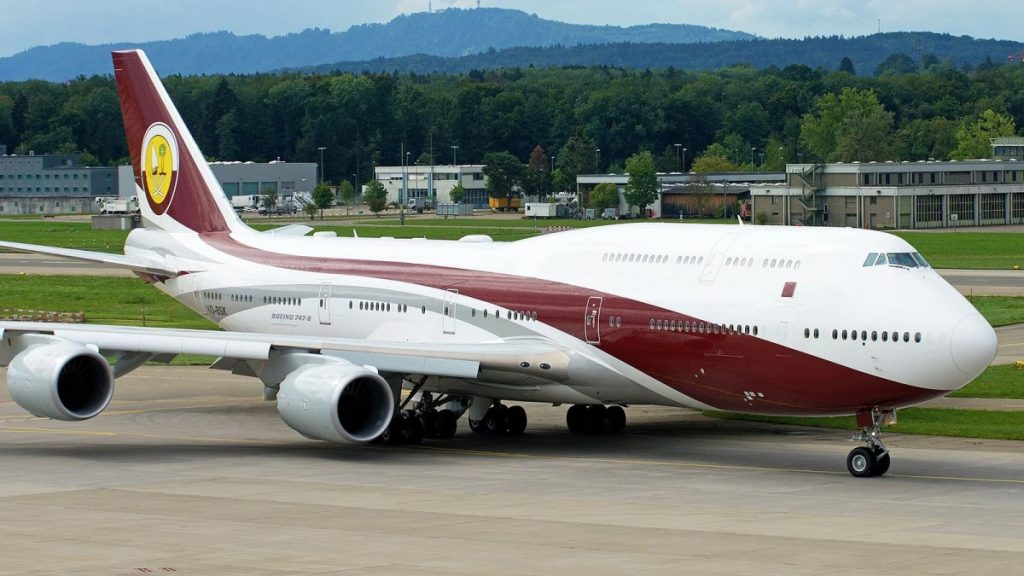
By sheer luck, the ex-President Donald Trump placed a bid on a new Air Force One with an odd peculiarity, which found him in the middle of political controversy, diplomacy, and ethics. In the middle of the controversy is an extravagant Boeing 747-8, commissioned by the Qatar royal family. Currently based in San Antonio, one day the plane could become the vehicle for the next president.

Trump’s quest for a replacement for Air Force One was never, however, one of looks. The two 747-200Bs in service since 1990 were becoming increasingly costly to maintain and were requested by commanders on both sides of the Atlantic. The $3.9 billion 2018 Boeing contract to construct two replacement aircraft was signed. But delays pushed the schedule way out into the distant future, likely beyond Trump’s second term, and forced him to seek alternative solutions. The nation required “the best airplane,” he believed, and he would not delay.

How a Qatari aircraft ended up on the table is a tale of personal relationships and back-channel diplomacy. After weeks of clandestine planning between the United States and Doha, the plane was flown to Florida so Trump could view it. It is priced in the range of $150 million and $400 million, whose interiors were bespoke by Paris-based Cabinet Albert Pinto, from specifically made carpets for it to sycamore and exotic hardwood inlays, master bedroom, guest suites, and grand lounges. Whatever it’s named, it would be an improvement over the current Air Force One.

Nevertheless, the suggestion of a foreign aircraft as a suitable presidential plane has set hot legal and moral flames. The U.S. Constitution’s Emoluments Clause forbids government officials from accepting foreign government gifts without Congressional approval. Trump’s action has been criticized because it would fall clearly within forbidden grounds.

Senator Chuck Schumer ridiculed the plan as “Nothing says ‘America First’ like Air Force One, courtesy of Qatar,” as “influence masquerading as charity.” Legal experts like Kathleen Clark were even more critical in opposition, on the basis that Trump was apparently moving toward erasing lines between public service and selfish benefit.

Ambiguity only got worse with each of the two sides offering conflicting information. Trump called the airplane a “gift,” but Qatari officials clarified that its status had not been negotiated at all and should not be assumed. The White House argued that everything was being done as per the laws, but with respect to lawmakers and critics, suspicion never deterred.

Even outside of legal considerations, it would be a Herculean technical challenge to retrofit a luxury plane into Air Force One. The president’s plane is not just an airplane house—it’s an airplane office with secure communication hardware, defense systems, and even nuclear protection.

Replacing the Qatari aircraft would involve stripping it down to near metal and refitting it to military specifications, something that would require years and hundreds of millions, if not billions, of dollars, according to industry sources.

And then security. Having an airplane sitting outside the country for years is exposing it to possible installation of spying equipment. John Cohen, a former Department of Homeland Security official, said whatever the president is smoking is an intelligence priority target. Darrell Blocker, a retired CIA officer, said testing its safety would be a “counterintelligence nightmare,” which would be to reduce it to the only surety of reducing it to the airframe.

For the taxpayer, this is an in-pocket expense. While Trump continued to insist the plane itself cost nothing, others li like aviation analyst Richard Aboulafia said that the conversion would cost hundreds of times the plane itself. Though the fixed-price Boeing contract on the new Air Force One program would put whatever work was done on this plane in taxpayers’ laps, it would do so for a negotiable amount.

And the Qatari 747-8 remains parked in retirement and on the ground, wondering if it will ever have the honor of being the president’s official plane. Time will tell, but one thing is certain: it doesn’t take a brand-new plane to replace Air Force One. It’s simply a matter of walking that fine line between ego, national security, and projecting American strength abroad.


